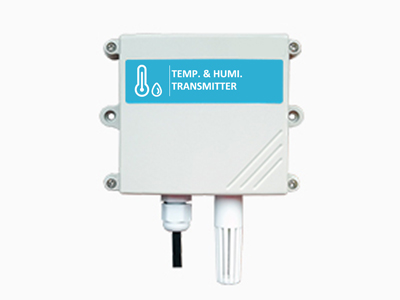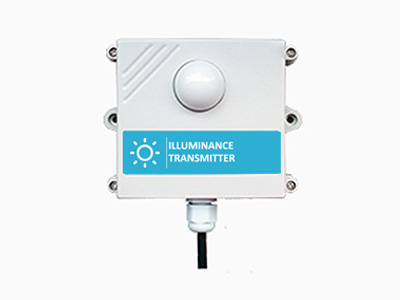
Background
A complete greenhouse remote monitoring system first detects indoor environmental elements through various sensors, and then uplodes the measurement signals to the control platform through wired or wireless means. Then the control platform remotely controls all kinds of terminal valves (such as water valves, heating, droppers, sprinkler irrigation and other equipment) in the room to ensure that the plants grow in the best condition.

The greenhouse remote monitoring system mainly measures indoor carbon dioxide, temperature, humidity, light, soil moisture, soil ph, and air pressure. Outdoors need to measure basic parameters such as wind speed, wind direction, and rainfall. These factors directly affect the growth of greenhouse plants. The sensor is a key component of the greenhouse remote monitoring system. Each sensor continuously measures a certain environmental factor at a specific location and reports these measurement results to the monitoring system. After the system detects the value deviation, it outputs a signal to the controller of the specific sensor to control the corresponding valve switch and make adjustments in time. The greenhouse remote monitoring system of the Internet of Things can be widely used in agriculture, horticulture, animal husbandry, and other fields. It can implement monitoring and management in places that require special environmental requirements and provide timely measures for realizing the healthy growth of ecological crops and timely adjustment of cultivation and management. Scientific basis, while realizing supervision automation.
What is greenhouse remote monitoring system?
The greenhouse monitoring system can also be called the greenhouse environmental control system. The system uses environmental data and crop information to guide users in proper cultivation management.
Seven Types of sensors for greenhouse remote monitoring system
1. Temperature and humidity sensor
Greenhouse humidity monitoring is a must. High humidity promotes mold and pest problems in greenhouses. Cold or high temperature seriously hinders the growth and development of plants. Adjusting the temperature and humidity can provide the best growth environment for the growth of indoor plants. The temperature and humidity sensors in the greenhouse provide you with accurate data. There are many options on the market to choose from, and in most cases, you will find a sensor that can check temperature and humidity at the same time.
The temperature and humidity sensor can be connected to an external controller. When direct sunlight causes the indoor temperature or humidity to be too high, the temperature and humidity sensor uploads the current value to the general platform, and the general platform sends a signal to the fan controller of the greenhouse to control its work suction or vent.
2.Light illumination sensor
Proper greenhouse lighting can maximize plant growth and development while minimizing energy consumption. Light measurement helps optimize growth and can be used to automate supplemental light levels in greenhouses and guide light positioning in indoor growth facilities. Light sensors are a good tool for assessing the exposure of plants to light. There are usually two types of sensors used to measure the light in a greenhouse: (1) global radiation, usually called energy units, and (2) photosynthetically active radiation (PAR).
The total solar radiation sensor is a primary pyrometer that measures the irradiance on the plane of the receiving earth. Mainly used to measure the total solar radiation in the wavelength range of 0.3 to 3 microns. If placed horizontally downwards, reflected radiation can be measured, and scattered light-shielding ring can be added to measure scattered radiation.
Carbon dioxide is one of the raw materials for photosynthesis of green plants, and 95% of the dry weight of crops comes from photosynthesis. Therefore, carbon dioxide has become an important factor affecting crop yields. The greenhouse has been kept closed for a long time, causing the air in the room to be relatively blocked and unable to replenish carbon dioxide in time. After sunrise, due to the accelerated photosynthesis of vegetables, the indoor carbon dioxide concentration drops sharply, and sometimes drops below the carbon dioxide compensation point (0.008%-0.01%). Vegetable crops can hardly carry out normal photosynthesis, which affects the growth and development of vegetables, causes diseases and reduces yield. Therefore, it is very important to use carbon dioxide sensors to monitor the CO2 concentration in the greenhouse. At present, the most commonly used carbon dioxide sensor works based on NDIR non-dispersive infrared technology.
4. Soil moisture sensor
Soil water content is the driving force for plant growth. When the water content in the soil is relatively high, the water in the plant will enter the body of the plant through the membrane of the root system, accompanied by a large number of inorganic nutrients in the soil. However, when the water content in the soil is insufficient, the concentration in the root system of the plant is lower than the growth environment of the outside world. This makes the main activity of the root system leading to the soil environment more, and the elements in the soil enter the plant body. If it is too small, it will have an impact on the growing needs of plants. Monitoring the soil moisture content in the greenhouse can help increase yields.
When choosing a soil moisture sensor, it is recommended to choose a soil sensor with a stainless steel probe, which can be inserted or buried in the soil for long-term monitoring without worrying about damaging the sensor. The soil moisture sensor is connected to a controller. When it detects that the soil moisture is too low or too high, the monitoring platform outputs a signal to the controller to control the drip irrigation on or off.


The effect of soil pH on crop growth is mainly manifested in the appearance and shape, material metabolism, growth and development, quality, and yield of plants. If the soil is too acid or alkaline, it will affect the root growth of plants to a certain extent, thereby affecting The normal growth and development of plants. Soil acid-base imbalance can also reduce the availability of nutrients in the soil and affect soil fertility. Therefore, it is necessary for the growth of crops in the shed to monitor the pH of the soil through the soil pH sensor, understand the soil quality, apply fertilizer reasonably, speed up soil improvement, and improve fertility.
When monitoring a variety of soil parameters, you can choose an all in one soil sensor. One sensor can detect soil temperature, humidity, conductivity, ph, and npk values at the same time. It is simple and cost-effective. JINGXUN all-in-one soil sensor is your best choice.
6. Rain sensor
The stainless steel rain gauge is recognized to be the standard for measuring rainfall and other precipitation in hydrological and environmental testing. The internal tipping bucket structure provides high accuracy in various rainfall intensity ranges.
The tipping bucket rain gauge working principle is counting the number of times the tipping bucket falls. The tipping bucket is made of stainless steel and divided into two half-cone chambers with equal volume by a partition in the middle. It is a mechanical bistable structure. When one chamber receives water, the other chamber is waiting. When it rains, the rainwater collected by the water receiving port enters the metering bucket through the funnel. When the volume of the received rainwater reaches the predetermined value of 0.2mm, the chamber will overturn due to gravity and be waiting, and the other chamber will be in a state of receiving water. When the water receiving volume reaches the predetermined value, the bucket will overturn again and be waiting. Magnetic steel is installed on the sidewall of the tipping bucket, which scans from the side of the dry reed tube when the tipping bucket flips to make the dry reed tube on and off. That is, every time the tipping bucket is overturned, the dry reed tube will be switched on and send out a pulse or 485 signal.


8. Environmental monitoring platform
As the front end of the entire agricultural greenhouse, the sensor needs a summary point after all kinds of data collection, and the environmental monitoring platform is such a role. It collects the data of various sensors, stores and analyzes them. Managers can view the data in real-time through computers, mobile phones, and other terminals, and link related equipment to manage the greenhouse according to environmental information, to realize the scientific, intelligent, and efficient management of the greenhouse.


